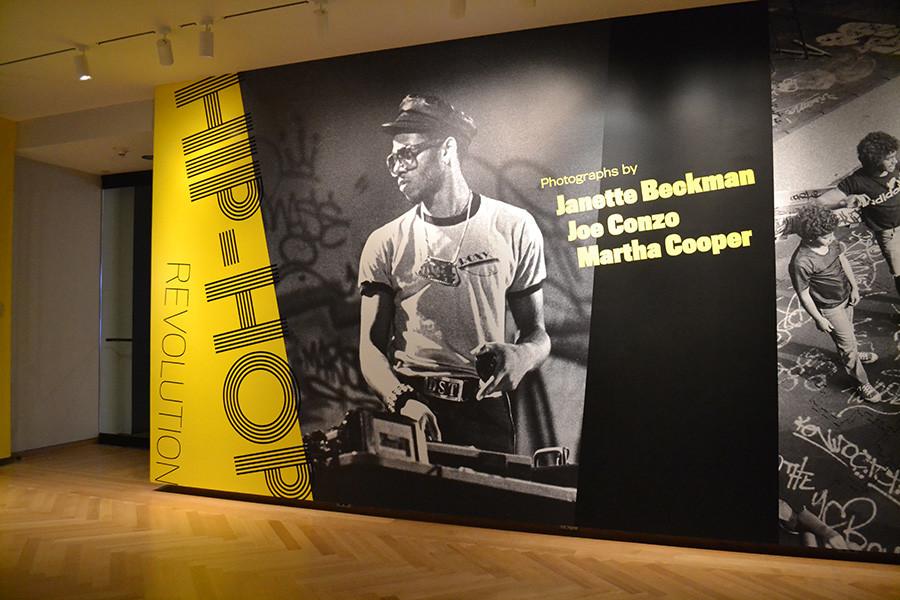Photography exhibit showcases hip-hop’s early days
The “Hip-Hop Revolution” photography exhibit runs until Sept. 13.
April 13, 2015
“Hip-Hop Revolution: Photographs by Janette Beckman, Joe Conzo and Martha Cooper” is now on display at the Museum of the City of New York, detailing the humble beginnings of hip-hop in the Bronx and Harlem and how it has evolved into a worldwide phenomenon. Through their photographs, Beckman, Conzo and Cooper helped expose the world of hip-hop to the mainstream United States. In more than 80 photographs on display, viewers find the story of early hip-hip between 1977 and 1990, tracing the culture’s origins and how it became what it is today.
Martha Cooper started taking pictures when she was only three years old. She photographed many subjects over the years, but when she took a shot at street culture in the ’70s, she fell in love with the rawness of the material. One of Cooper’s earliest and most iconic photos features eight young boys working together to haul a large cardboard box. Following the photograph, the boys used the cardboard box as a smooth surface to practice break dance. This photo from 1983 shows the beginnings of early hip-hop as it became a generational movement.
Janette Beckman photographed musicians in Britain, initially specializing in capturing that country’s punk rock scene. After photographing three Police album covers, Beckman turned to the hip-hop scene in the early ’80s. Many credit her work with introducing the faces of hip-hop to popular culture, through photographs of icons like Salt-N-Pepa, LL Cool J and Run DMC. On display at the museum is the first album cover for Salt-N-Pepa, which Beckman photographed. She also helped bring attention to women in the genre by photographing
Women of Rap, a photo spread that accompanied an article about female artists in hip-hop.
Joe Conzo became interested in photography when he began photographing his daily life as a teenager. He took pictures for his senior yearbook at South Bronx High, where many students were also at the forefront of hip-hop. When he was still in school, Conzo documented a classmate performing hip-hop in the park, and has been involved in documenting the movement ever since. In addition to his photographs of the scene, the museum displays Conzo’s old report cards, Polaroid pictures, cameras and other personal belongings. The exhibit also includes listening stations, providing visitors with samples of contemporary New York City hip-hop.
A version of this article appeared in the Tuesday, April 14 print edition. Email Talia Milavetz at [email protected]


























































































































































